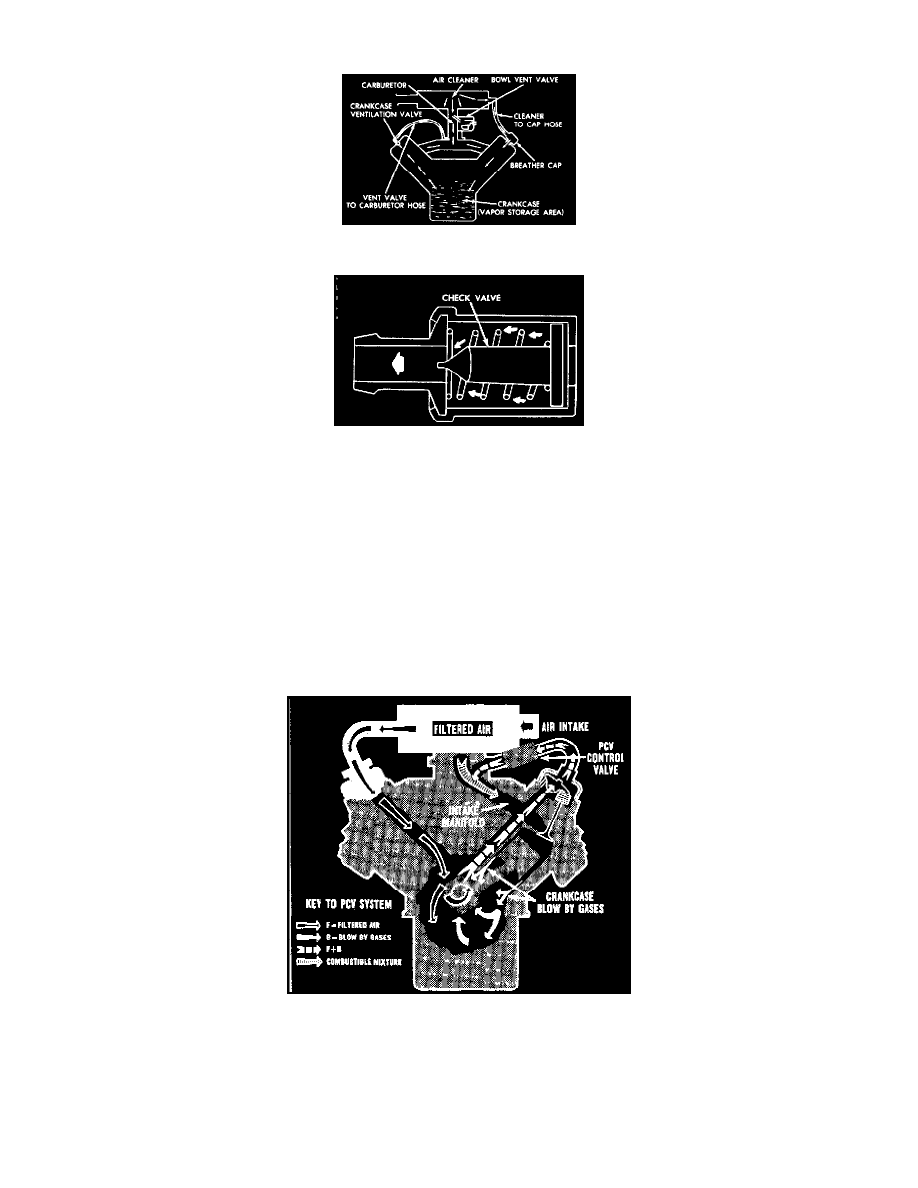Firebird V8-305 5.0L (1982)

Positive Crankcase Ventilation: Description and Operation
Fig. 37 - Positive Crankcase Ventilation (PCV) System. Typical
Fig. 38 - PCV Valve Cross Section
In 1961, the earliest form of automobile emission control, the PCV system was standard equipment on all General Motors vehicles sold in
California.
Two years later in 1963, all General Motors vehicles sold in the United States were equipped with this emission control system.
Combustion engines produce varying amounts of blow-by gases--gases containing undesirable pollutants which seep past the piston rings and into
the crankcase during combustion.
SYSTEM OPERATION
The PCV system prevents blow-by gasses from entering the atmosphere by routing blow-by gases into the intake manifold through a vacuum
controlled ventilating valve and a hose while allowing proper crankcase ventilation.
-
Blow-by gases mix with the air/fuel mixture and are burned during combustion.
-
When the engine is running, fresh air is drawn into the crankcase through a tube or hose connected to the air cleaner housing.
Fig. 41 - Positive Crankcase Ventilation System
